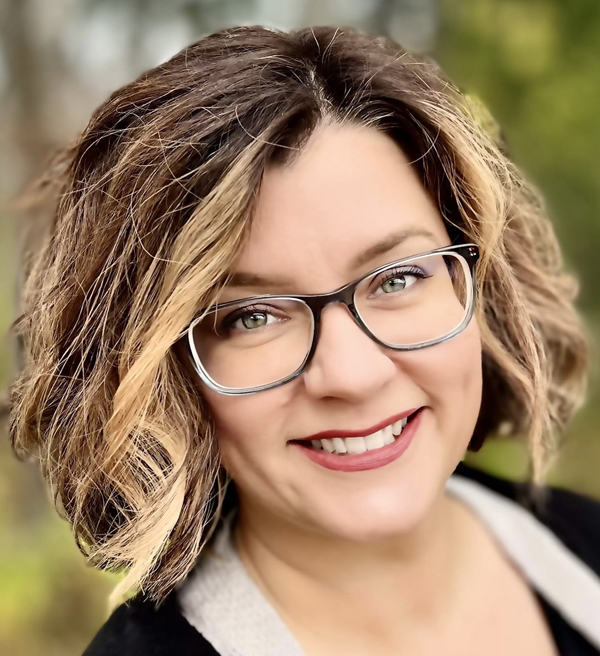This is the first in a series of guest blogs by the 2025-26 Michigan Regional Teachers of the Year. Susan Solomon is an elementary teacher at JKL Bahweting Anishnabe Public School Academy in Sault Ste. Marie.
Several years ago, when I was still teaching fifth grade, one of my students (let’s call him Jordan) spent most science lessons doing the bare minimum. He was capable, but I could tell he wasn’t challenged. We were starting our Earth Systems unit, and instead of giving the whole class the same textbook activity on the water cycle, I offered an extension: Design a system to collect and store rainwater for use during droughts. Jordan’s eyes lit up. He researched local rainfall patterns, sketched prototypes and even used recycled materials from home to build a working model. This project drew Jordan in. He went from coasting to leading, presenting his design to the class with the confidence of an engineer. Jordan wasn’t in our district’s gifted program. But he thrived when given the kind of challenge we often reserve for students with that label. That’s when it clicked for me: Strategies designed for our highest-ability learners aren’t just for them; they can lift the learning for everyone. Like the old saying goes, a rising tide raises all ships.
Debunking the Myth
Gifted education is often misunderstood as an “exclusive club.” In reality, many of its core practices – choice, depth, acceleration – are simply good teaching.
When we focus only on bringing struggling students up to “grade level,” we risk missing the students who are ready to leap ahead. But when we teach up instead of just to the middle, something powerful happens: The bar rises for everyone, and achievement follows.
In Region 1, where our classrooms serve a mix of rural, Indigenous and small-town communities, this approach has been a game-changer. Resources may be limited, but student potential is not.
What “Teaching to the Top” Looks Like
You don’t need a separate curriculum or a room full of enrichment materials to use gifted strategies. Here’s how it can look in any classroom:
- Plan for your most capable learner first: Design your lesson as if you were teaching your highest-ability student, then scaffold supports for others to access the same rich content. This raises expectations and achievement for the whole class.
- Tiered assignments: Start with a core task, then offer “stretch” challenges that push thinking deeper.
- Curriculum compacting: Pre-assess students to skip mastered material and free up time for advanced work.
- Personalized learning projects: Let students pursue an area of passion or curiosity, with teacher guidance, to produce something original and meaningful.
- Project-based learning: Give students real-world problems to solve – problems with no single “right” answer.
- Socratic seminars: Let students lead discussions and explore complex ideas.
- Choice boards/menus: Offer options for how students demonstrate their learning – videos, art, research papers, prototypes.
When these strategies are offered to everyone, you’ll see unexpected students step up and excel.
Why It Works for All Learners
When we teach to the top:
- Engagement skyrockets: Students invest more when their work feels meaningful.
- Equity grows: Access to rich, challenging learning shouldn’t depend on a program label.
- Skills deepen: Critical thinking, creativity and collaboration benefit all students, not just the high-achievers.
- Achievement rises: Setting the bar high and supporting students to reach it creates a ripple effect across the class.
I’ve watched students who once coasted through worksheets light up when they’re asked to think big, take risks and make something that matters.
A Region 1 Perspective
At JKL Bahweting Anishinaabe School, we’ve adapted gifted strategies to honor our cultural and community context. Students design projects rooted in Anishinaabe traditions, partner with elders as mentors and engage in land-based learning.
When a group of students built a model of an energy-efficient future city inspired by traditional structures, it wasn’t “just” an advanced project – it was a bridge connecting past, present and future. These strategies are flexible enough to honor every learner’s identity while pushing them academically.
The One Question That Changes Everything
Now, before making instructional decisions, I ask myself:
“Will this challenge my highest-ability learner?”
If the answer is yes, I know it will also create opportunities for everyone else.
When we teach to the top, we send a message to every student: I believe you can do something extraordinary. And more often than not, they prove us right.
Try This Tomorrow
- Pre-assess one lesson this week to see who already has mastery.
- Offer an enrichment challenge to all students, not just those you expect will take it.
- Watch who surprises you.
Final thought: When we plan our lessons with the most capable learner in mind, we raise the ceiling for our entire classroom. With the right supports in place, a rising tide truly does raise all ships – and in the process, we prepare every Michigan student to sail toward their greatest potential.

